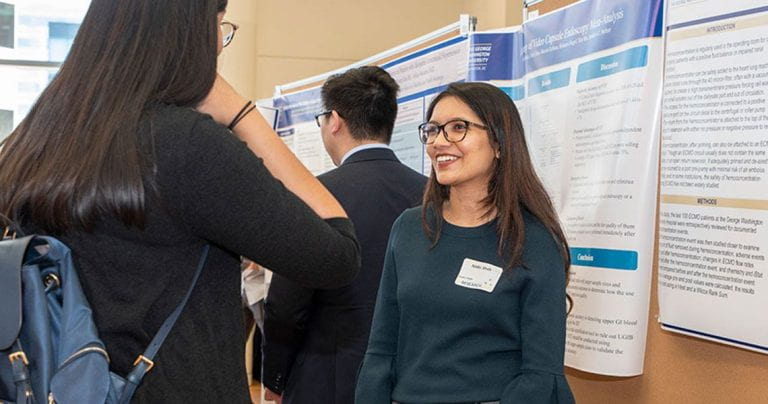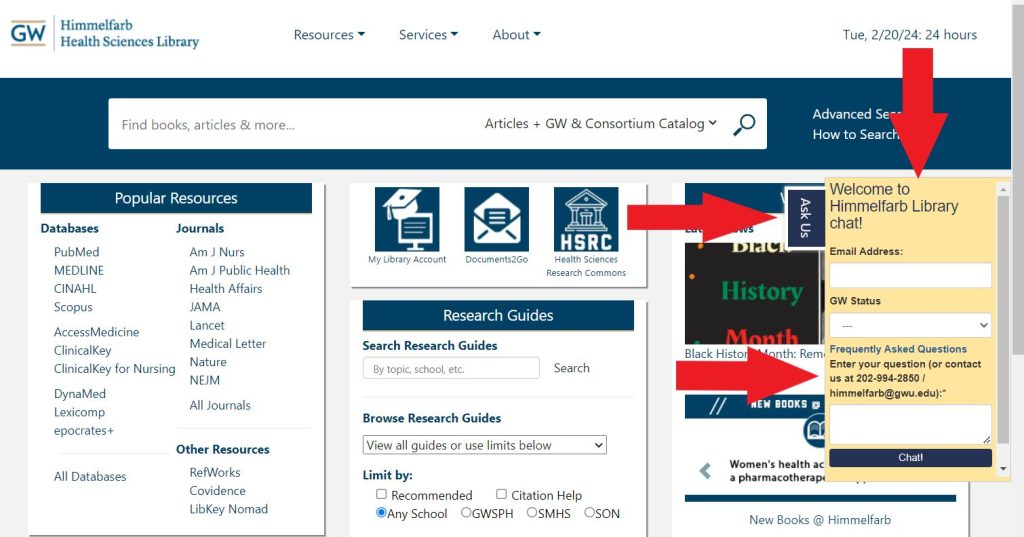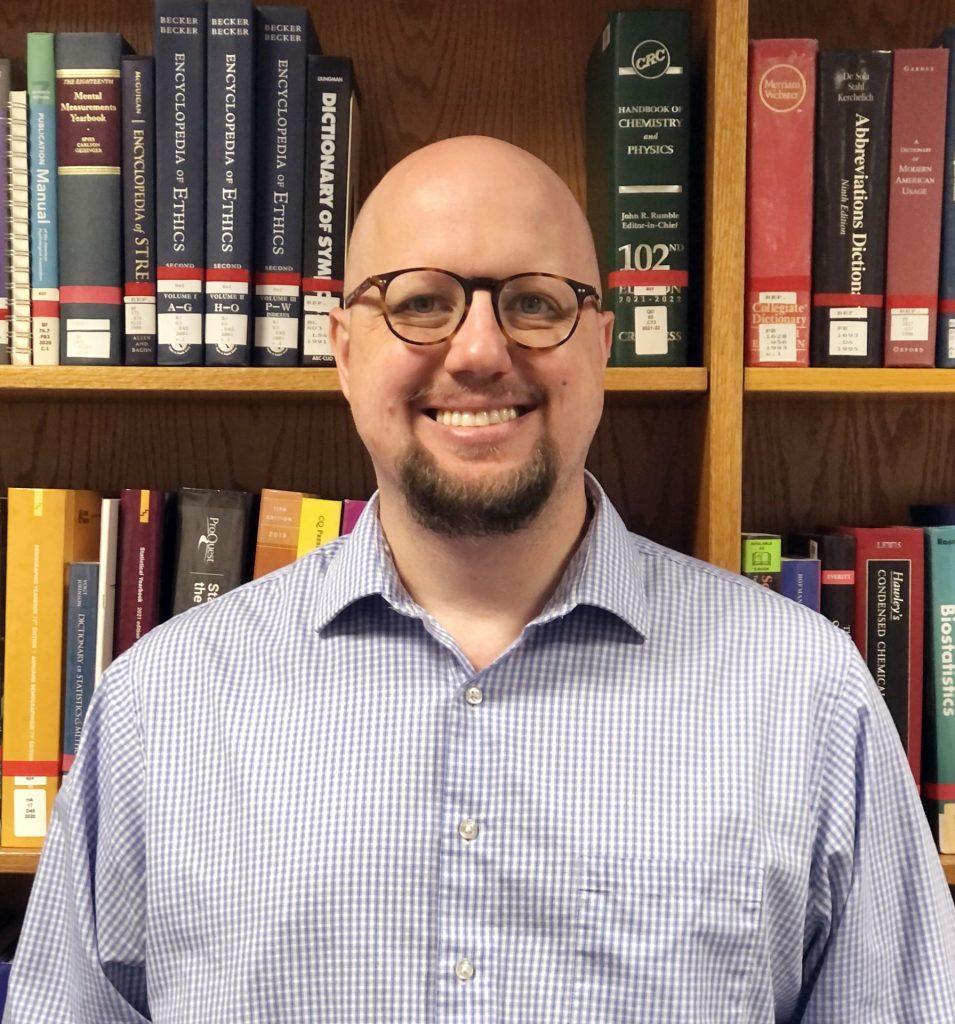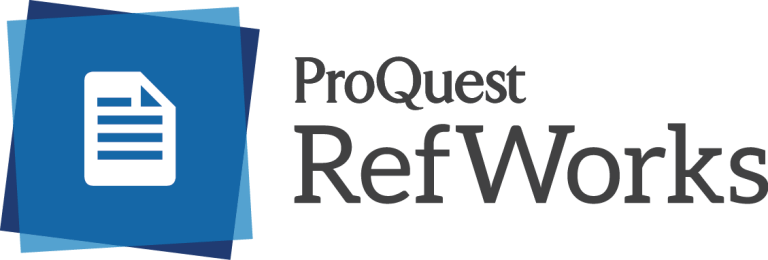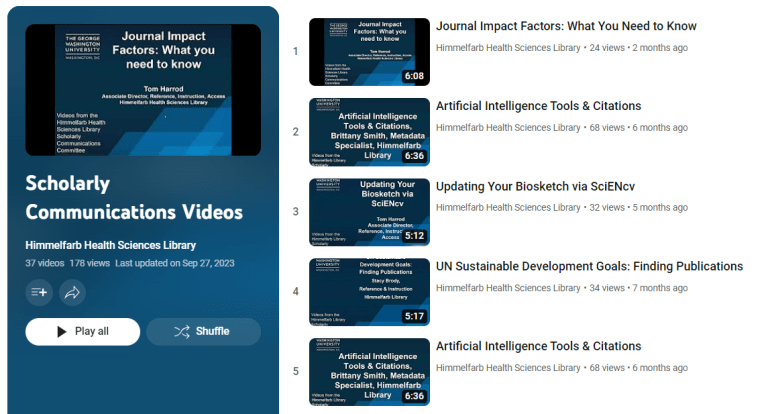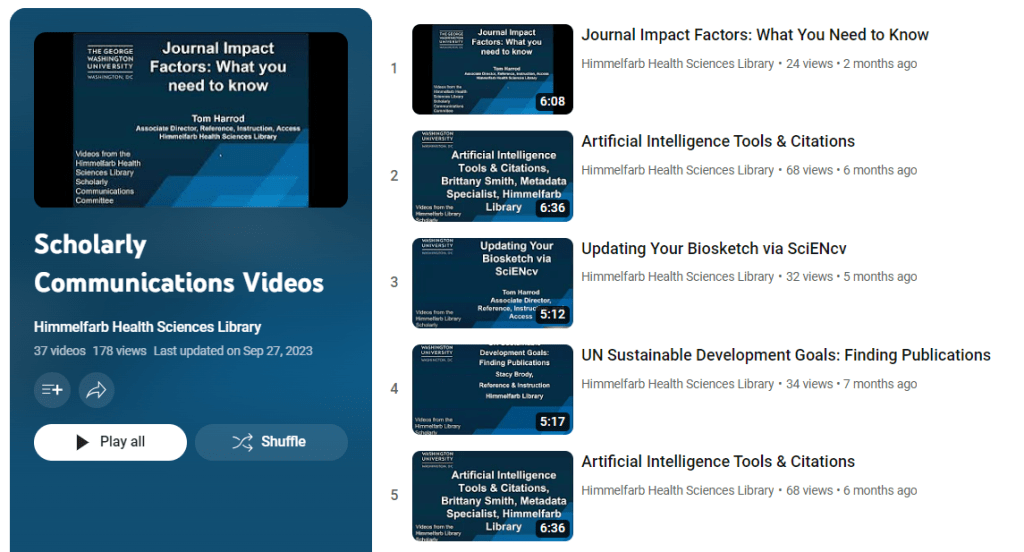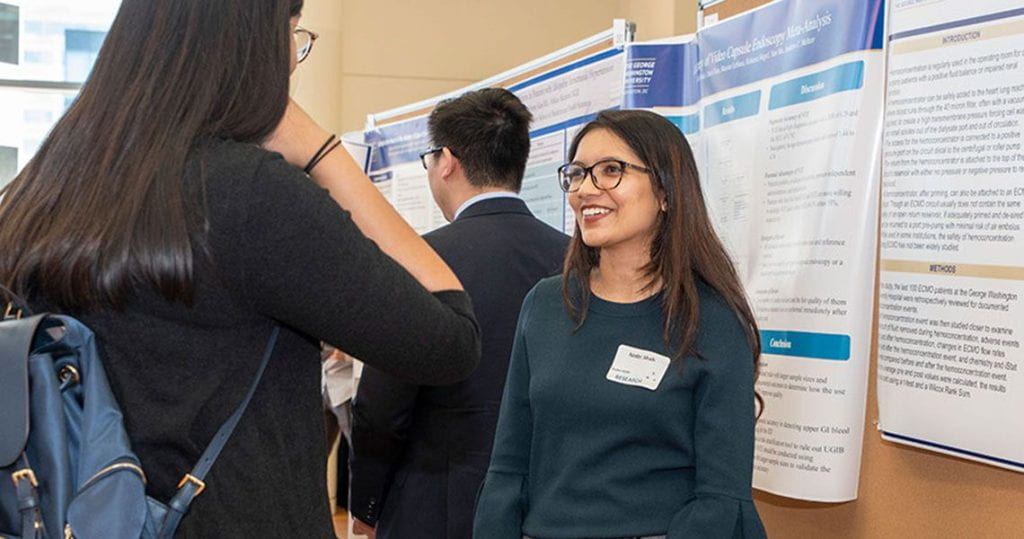
The GW Research Showcase is just around the corner! The School of Medicine and Health Sciences (SMHS) Research Showcase is at the University Student Center on April 25, 2024. This year’s Keynote Speaker, Omaida C. Velazquez, MD. will present “Gene-Modified MSCs and Direct Gene Therapy as Novel Strategies for Vascular Regeneration and Wound Healing.” The medical student poster session will be held from 1:30 pm to 3:30 pm.
While the deadline for submitting abstracts has passed, you may still be working on putting your poster together. Himmelfarb Library can help! Our GW Research Day Resources Guide has helpful resources and tips that can help make your poster stand out. The Creating Effective Posters page has poster templates, official GW logos, and the official GW Color palette to help you stay consistent with GW’s brand. If you are creating your poster using PowerPoint, the video below on Designing an Effective Poster Using PowerPoint has useful tips on size, color selection, font choices, and including graphs, charts, and photographs in your poster.
The Poster Design and Layout page also has great tips on selecting the right font, resizing images, and getting posters printed. When choosing fonts, it’s best to keep things simple and use familiar fonts like Times New Roman or Arial. Images should be 300 dpi JPEG files or full-size PDF files. If you need to resize an image, make sure that you keep the proper proportions so the image doesn’t appear distorted and “squishy” looking on your poster.
Once your poster is ready, it’s time to start thinking about how you’ll impress the judges. Here are some great videos that can help you prepare for giving your poster presentation:
- How to Present Your Poster and Wow the Judges (access is restricted to members of the GW community)
- Giving Effective Poster Presentations
- Poster Presentation Practice and Feedback
The GW School of Public Health (GWSPH) Research Day was yesterday, April 9, 2024. If you participated in the GWSPH Research Day, don’t forget to submit your poster to Himmelfarb’s institutional repository, the Health Sciences Research Commons (HSRC). Archiving your poster in the HSRC is a great way to ensure that your poster is available to the global community of scholars! Archiving your work in the HSRC has several advantages:
- Your poster will have a unique URL that you can include in your CV and use to promote your research. This unique URL will remain active even after you graduate from GW.
- The HSRC is indexed in Google Scholar, which allows other researchers to find your work through Google Scholar searches.
Submitting your poster to the Health Sciences Research Commons is easy! Simply email hsrc@gwu.edu to submit your poster directly or to ask for more information.

